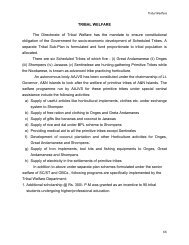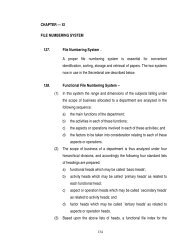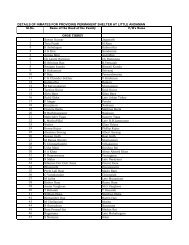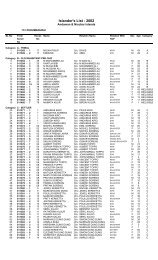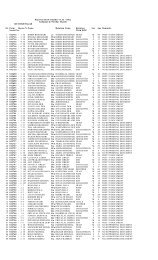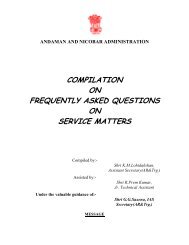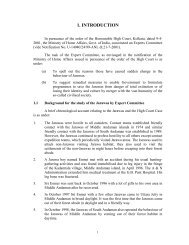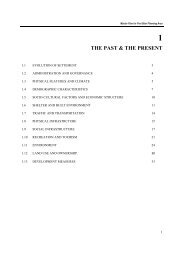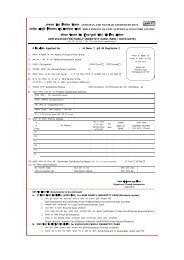Part III - Andaman and Nicobar Islands
Part III - Andaman and Nicobar Islands
Part III - Andaman and Nicobar Islands
You also want an ePaper? Increase the reach of your titles
YUMPU automatically turns print PDFs into web optimized ePapers that Google loves.
23<br />
fields belonging to the family <strong>and</strong> so also do the children on<br />
holidays. Previously they used to go for hunting <strong>and</strong> shell<br />
fishing; but they go no more since these have been banned. Boys<br />
of the community labour under Schemes sponsored by the<br />
Govt;(copy of the statement made be Smti Frieda George is in<br />
Karen file).<br />
State of Education among the Karens.<br />
Previously the Karens did not find any interest in higher<br />
education since they felt quite happy with their free hunting,<br />
fishing <strong>and</strong> cultivating pattern of life. But the restrictions on<br />
hunting <strong>and</strong> shell fishing made them to realise the necessity of<br />
education. Thereafter, gradually there has grown a tendency to<br />
go for higher <strong>and</strong> technical studies.<br />
Smti. Frieda George informs the Commission that even<br />
thought most of the Children go for primary education they<br />
usually stop at that since their parents are too poor to provide<br />
for their uniforms, text-books etc. Up to date only 20/25 boys<br />
<strong>and</strong> girls have passed the Secondary Examination <strong>and</strong> 10/15<br />
Higher Secondary. There are only one BE <strong>and</strong> one Diploma<br />
holder in Civil Engineering <strong>and</strong> only one has passed out from a<br />
Technical Institute as a welder. There is only one doctor.<br />
Economic Condition among Karens<br />
The Karens – as a whole are not a very prosperous<br />
community. By their agricultural pursuits <strong>and</strong> working as<br />
labourers they just manage to pay their way. This is also<br />
because they are accustomed to lead a simple, tribal life without<br />
much want.<br />
Most of the Karen houses are built on stilts traditionally,<br />
with a very large number having floors made of plank, sticks,<br />
mud or mat. The walls are mostly made of mat, planks, or mat<br />
<strong>and</strong> thatch. The houses mostly have thatched roofs <strong>and</strong> tins are<br />
also being used. Without an hesitation these may be called<br />
katcha houses. The doors of the these housed have no door<br />
leaves <strong>and</strong> there is no provisions of locking up the openings.(see<br />
report of Sri Awaradi at page 4 <strong>and</strong> the Appendix attached<br />
thereto- at page 12, Annex- B/1 of Bhantu file).



